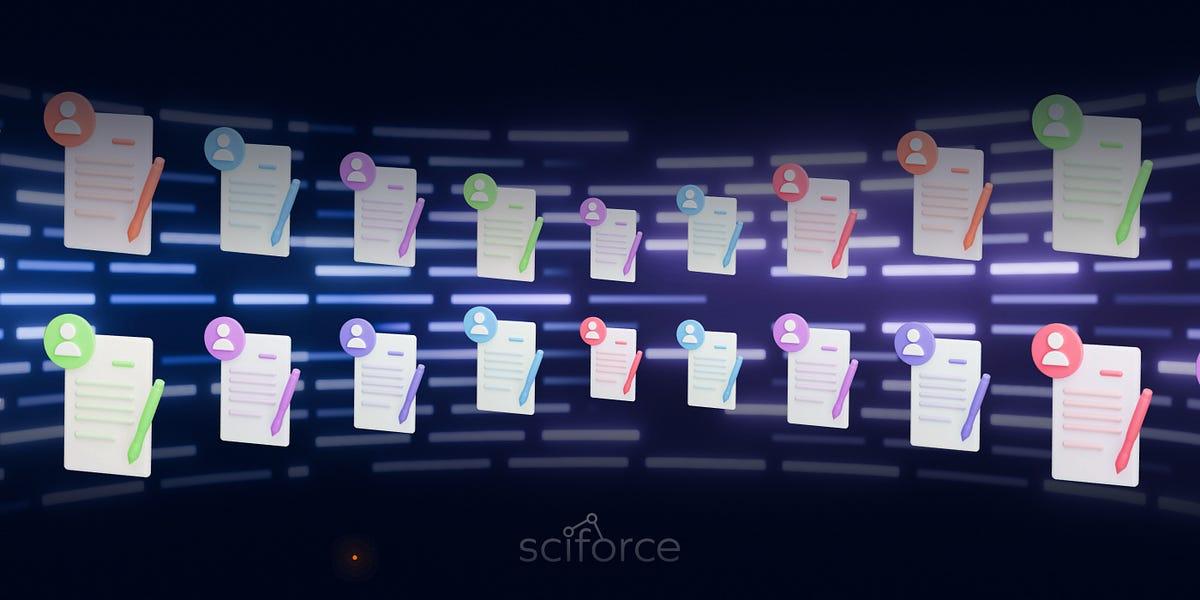AI-Powered Legal Document Analysis and Contract Review
Uncategorized
In today’s fast-paced, digitally-driven legal landscape, the integration of Artificial Intelligence (AI) into legal practices has revolutionized how professionals manage, interpret, and analyze legal documents. Legal document analysis and contract review are integral to law firms, corporate legal departments, and compliance teams. Traditionally, these tasks required meticulous human effort, were time-consuming, and prone to oversight. However, the rise of AI-powered tools has introduced unprecedented efficiency, accuracy, and cost-effectiveness in these domains. AI-driven systems can analyze vast volumes of legal documents, extract relevant clauses, flag anomalies, and ensure compliance with legal standards, thereby reducing the workload on legal professionals and allowing them to focus on higher-level strategic tasks.
One of the most significant areas where AI has made a transformative impact is in contract review. Contracts are at the core of every business transaction, encompassing agreements between vendors, clients, employees, and partners. Reviewing contracts manually involves examining complex clauses, identifying risks, and ensuring compliance with the latest regulations. AI platforms, leveraging Natural Language Processing (NLP) and Machine Learning (ML), can now scan thousands of documents in a fraction of the time it takes a human to do the same. These systems can be trained to understand legal language, spot critical clauses, highlight non-standard language, and suggest edits based on past patterns and regulatory norms. This not only reduces the risk of human error but also ensures that no crucial detail is overlooked.
Machine learning algorithms play a central role in refining AI’s ability to process legal texts. These algorithms are trained using annotated datasets that contain examples of contracts, legal terminology, clause categorizations, and risk flags. Over time, they learn to recognize patterns and make increasingly accurate predictions about which sections of a document may be problematic or require closer scrutiny. For instance, in mergers and acquisitions, AI can swiftly analyze data rooms, perform due diligence, and identify potential red flags across multiple documents such as NDAs, employment agreements, lease contracts, and more. This is a critical time-saver during tight deadlines and high-stakes negotiations.
Natural Language Processing (NLP) is particularly vital in legal document analysis. Legal language is dense, nuanced, and varies across jurisdictions and industries. NLP helps AI tools to interpret context, distinguish between types of clauses, and understand the intent behind specific contractual language. This allows for deep semantic analysis, which goes beyond simple keyword matching. NLP-powered tools can thus identify clauses related to confidentiality, indemnification, governing law, force majeure, and dispute resolution, among others. They can also compare clauses against industry benchmarks or a company’s internal standards to ensure consistency and minimize risk.
The benefits of AI-powered contract review are manifold. From a time-efficiency perspective, what used to take days or even weeks can now be accomplished in hours. From a cost standpoint, reducing the reliance on manual labor leads to significant savings for legal departments and clients. Moreover, the consistency and objectivity introduced by AI minimize variability in interpretation, which is often a challenge with human reviewers. Additionally, AI systems can be configured to stay up to date with changes in law, regulatory updates, and industry best practices, ensuring that the contracts they review reflect current requirements.
Risk mitigation is another key advantage of AI-powered legal analysis. These tools can identify risky clauses, missing elements, or terms that deviate from the norm. For example, a system might flag an unusual limitation of liability clause that could expose a company to excessive financial responsibility. It might also detect ambiguous language that could lead to future disputes. By automating this process, companies are better positioned to negotiate favorable terms, avoid litigation, and ensure legal compliance.
Furthermore, AI systems are being integrated with contract lifecycle management (CLM) platforms to provide end-to-end automation. From drafting to approval, signing, storage, and renewal, AI tools can streamline every phase of contract management. During the drafting phase, AI can offer clause suggestions or generate entire agreements based on templates and past contracts. In the negotiation phase, it can simulate various scenarios to evaluate the impact of proposed changes. Post-signature, AI helps in monitoring obligations, deadlines, and renewal dates, reducing the likelihood of missed opportunities or penalties.
Despite its advantages, AI in legal analysis is not without challenges. Legal documents are not standardized, and different jurisdictions have varying formats and legal traditions. This diversity makes it difficult to create a one-size-fits-all AI model. Training models requires high-quality, domain-specific datasets, which are often proprietary and hard to obtain. Moreover, while AI can support decision-making, it cannot (and should not) replace human judgment. Legal professionals must still review and interpret AI outputs, especially for high-risk decisions. There is also the issue of explainability — stakeholders need to understand how AI reached its conclusions, particularly in regulated industries where accountability is critical.
Ethical concerns also arise around data privacy, bias, and transparency. Legal documents often contain sensitive information, and ensuring data confidentiality while training and operating AI systems is crucial. Bias in AI models — stemming from biased training data — can lead to unfair or discriminatory interpretations. For example, if a model is trained primarily on contracts from a specific jurisdiction or industry, it might perform poorly or make incorrect assumptions in other contexts. Therefore, developers must ensure their models are diverse, well-audited, and continuously updated.
The future of AI in legal document analysis looks promising. As the technology evolves, we can expect more sophisticated tools capable of understanding intent, context, and even negotiation tactics. Integration with generative AI models, such as large language models (LLMs), offers exciting possibilities. These models can not only analyze but also generate contract drafts, summarize legal documents, and provide plain-language explanations of complex clauses, making legal documents more accessible to non-lawyers.
In addition, AI can play a crucial role in international contracts where multiple languages and jurisdictions are involved. Multilingual AI systems can translate and compare contracts across languages while preserving legal nuance. This capability is invaluable in global business environments where cross-border transactions are the norm. AI can also facilitate regulatory compliance by automatically mapping contract terms to relevant regulations such as GDPR, HIPAA, or industry-specific standards.
Law firms and in-house legal teams are increasingly adopting hybrid models where AI and human expertise work in tandem. Junior lawyers and paralegals benefit from AI tools that enhance their productivity and allow them to focus on more meaningful work. Senior attorneys use AI insights to guide strategic decisions and improve client service. In fact, some firms are creating new roles such as “legal technologist” or “AI analyst” to bridge the gap between technology and legal practice.
As AI becomes more entrenched in the legal field, legal education and training must evolve to prepare future lawyers. Understanding how to use AI tools, interpret their results, and manage risks associated with AI will become essential skills. Law schools and professional organizations are beginning to offer courses in legal technology, data privacy, and AI ethics to meet this demand.
AI is also being used to enhance legal research capabilities. AI-powered legal research tools can scan through thousands of cases, statutes, and legal opinions in seconds, providing relevant information faster than traditional methods. These tools use semantic search, which understands the intent behind a query rather than relying solely on keywords. This enables legal professionals to find more relevant case law, precedents, and legal interpretations, which strengthens their arguments and improves the quality of legal advice.
Another evolving application of AI in legal work is predictive analytics. By analyzing historical case data, AI systems can predict outcomes of litigation or estimate the likelihood of winning a case based on factors such as the judge, court, jurisdiction, and case facts. This allows law firms and clients to make more informed decisions about whether to settle or proceed with litigation, optimizing their legal strategy and resource allocation.
AI can also improve client communication and service delivery. Chatbots and virtual assistants powered by AI can provide clients with 24/7 access to legal information, answer frequently asked questions, and assist in filling out forms. These systems can be integrated with firm websites or mobile apps to provide real-time legal support. While they cannot replace a lawyer’s expertise, they serve as a valuable first point of contact, improving responsiveness and client satisfaction.
Furthermore, compliance monitoring is a growing area where AI is making an impact. Organizations need to comply with a wide range of laws and regulations, which often change frequently. AI can monitor these changes and automatically alert legal teams to any updates that may affect their contracts or policies. It can also audit documents to ensure they comply with current regulations, reducing the risk of non-compliance and associated penalties.
Document version control and collaboration are also enhanced by AI. In contract negotiations, multiple versions of a document are created and shared among stakeholders. AI tools can track changes, highlight differences, and suggest improvements across versions. This helps maintain consistency, prevents errors, and accelerates the negotiation process.
AI can assist in eDiscovery during litigation. eDiscovery involves identifying, collecting, and producing electronically stored information (ESI) relevant to a legal case. AI can process large volumes of ESI, classify documents, and prioritize those most relevant to the case. It can also detect patterns and relationships within the data, uncovering hidden insights that might be missed by manual review.
Lastly, the future holds potential for even greater innovation, including AI that can participate in real-time negotiations, AI judges in arbitration settings, and fully automated legal transaction systems. These developments, though still in early stages, point toward a legal ecosystem that is not only more efficient but also more equitable, with improved access to justice through lower costs and faster service delivery.
In conclusion, AI is reshaping the legal landscape in profound ways. From document review and contract analysis to predictive analytics and client communication, AI enhances every facet of legal practice. While challenges remain, the legal profession is adapting rapidly to harness the power of AI. As we move forward, the synergy between human expertise and machine intelligence will define the future of law, creating a more efficient, informed, and accessible legal system for all.
